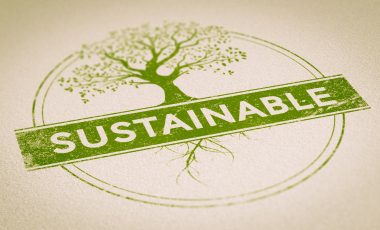Shopping sustainably has become more important than ever before, but that doesn’t make it easy as a consumer to identify a truly sustainable product or brand. Even the most well-intentioned shopper can fall victim to greenwashing and less than truthful marketing.
The easiest way for anyone to start to narrow down some possible options when shopping is to look for sustainable or green certifications on products. Whether you are shopping for outdoor gear or a household item, many of these certifications can apply.
- Why sustainability certifications are important
- Sustainability certifications to look for while shopping
Why sustainability certifications are important
Not all sustainable brands or products will have these certifications. Still, they make it much easier for consumers to identify when a brand is doing its due diligence to lessen its environmental footprint.
Trusting a brand at face value with their claims can be done without certifications but should be done very carefully. An example of when this may happen is with smaller, more localised brands. Especially when they are just starting, they may not yet have the data or the money to get certified. Look at a brand’s sustainability page on the website, or better yet, see if they have a transparency report. These can give the consumer an inside look into the entire supply chain and product lifecycle and will verify whether or not they are genuinely meeting their claims.
Certifications are necessary because they are generally given by a third party, making them less likely to be biassed or greenwashed. Most third-party certifications require inspections, an analysis, or some specification of standards that a company must meet. If it is a reputable certification, they follow up with each company regularly to ensure those standards are continuously met.
Sustainability certifications to look for while shopping
This is not an all-inclusive list, but these are some of the most common and trusted sustainably certifications used within the outdoor industry. Many of these can be used across a wide range of products or are niche to one area, like textiles.
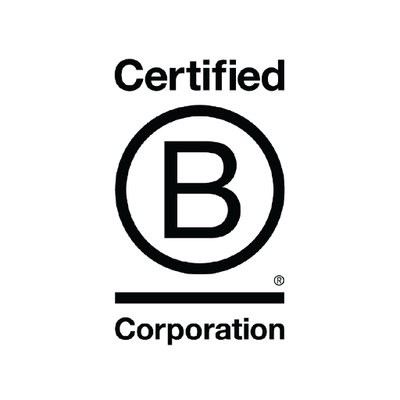
Certified B Corporation
www.bcorporation.net
Certified B Corporations must meet rigorous standards for social and environmental responsibility. The “B” stands for “benefit,” and it requires that the company be truthful and transparent in all of its practices, having legal accountability for its claims. All companies that are Certified B Corp follow standards set by a third-party advisory council. To get this certification, the company must complete a performance assessment measuring impacts across company categories like the environment, workers, communities, and customers.
Above all the other certifications, being a B Corp helps companies balance people, planet, and profit. A brand new company wouldn’t be equipped to get this certification until they have enough data to complete the assessment, which ensures that their policies and practices are consistent.
While general aspects are standardised, individual company assessments are tailored to the size and scale of the business. To get through the multi-step verification process, a business must earn at least 80 out of the 200 points. Companies are scored on the size of the business and market compared to their raw material sourcing, energy use, employee wages, and civil engagement (and many other things). Many companies will not become B Corp because of the thorough verification process. Most companies average a score of around 50 out of 200, which does not qualify them for this certification.
Once a company is certified, they are not in the clear just yet. To keep the certification, they must undergo the entire verification process every three years. On top of that, governing documents also legally bind them to their social and environmental commitments to guarantee a higher level of follow-through. The B Corp standards and requirements are continually changing and evolving, requiring companies to stay updated with current best practices for re-certification.
To see if a company is certified or where they sit in the verification process, public company report cards are shared on the B Corp Directory.
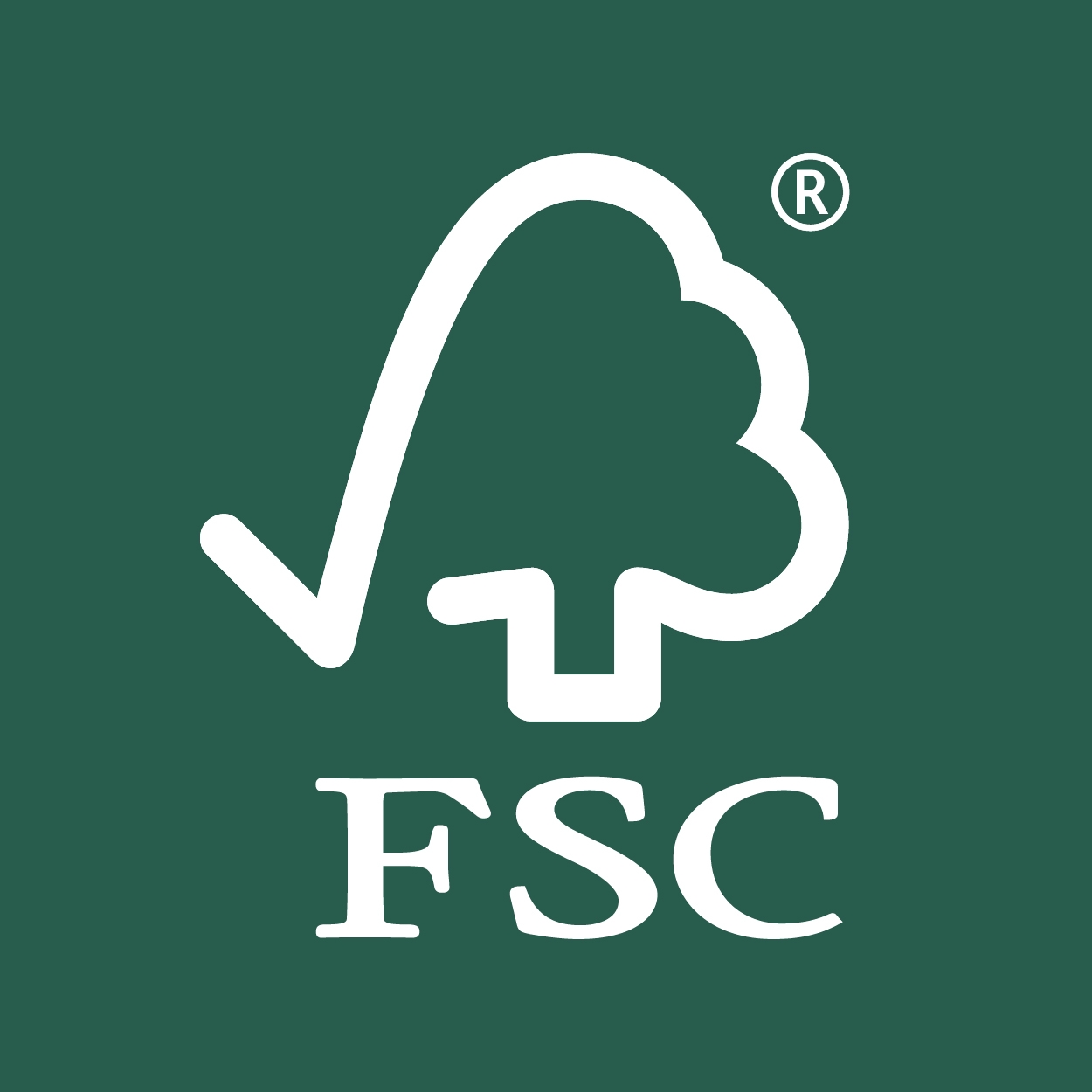
Forest Stewardship Council
www.fsc.org
The Forest Stewardship Council (FSC) is the standard for responsible forest management, restoration, and conservation. As stated on its website, the FSC’s mission is to “promote environmentally appropriate, socially beneficial, and economically viable management of the world’s forests.”
To earn an FSC certification, a company must meet its ten principles and 70 criteria.
The ten principles all FSC-certified forests must meet include:
Compliance with all applicable laws and regulations
- Maintain and enhance working and social conditions for all employees
- Uphold Indigenous’ people’s legal and customary rights
- Contribute and maintain social and economic well-being of local communities
- Efficiently manage products and services and enhance the long-term economic viability
- Maintain, conserve and/or restore ecosystem services and environmental values
- Have consistent and proportionate management planning in place
- Monitor and assess objectives and progress towards reaching management objectives
- Maintain and enhance conservation values
- Implement consistent management activities that align with economic, environmental, and social policies and objectives
There are three types of FSC standards. When a product is 100% FSC, that means all of the materials within that product are sourced from forests that are FSC-certified and meet all of their standards. A third party audited all those materials to confirm they have been managed appropriately and meet social and environmental expectations.
The other two FSC certifications are FSC recycled and FSC mixed. FSC recycled means the materials are 100% either post-consumer or pre-consumer recycled/reclaimed. The FSC utilised recycled materials to take some strain off extracting virgin materials and further preserve forests. FSC mixed means the product is made from a mixture of FSC-certified forests, recycled materials, and FSC-controlled wood. Controlled wood does not come from FSC-certified forests, but it reduces the risk of those materials coming from unregulated sources.
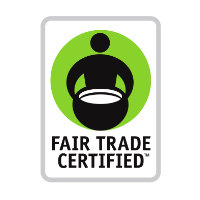
Fair Trade Certified
www.fairtradecertified.org
The Fair Trade Certification is likely one that you have seen before and can be applied across a wide range of products. The purpose of this certification is to show where a product originates and whether it meets human rights requirements, environmental protections, and fair labour practices. These standards and requirements are in place to prevent factory workers, farmers, and fishermen from exploitation.
When a product is marked with a Fair Trade certification, it helps protect safe and ethical land and material management, working conditions, fair wages, and continued community investment. By returning a portion of each certified product to a Community Development Fund, workers can decide how the money is spent within their communities. Some examples of where they can choose to send money include scholarships, child care, or subsidised housing.
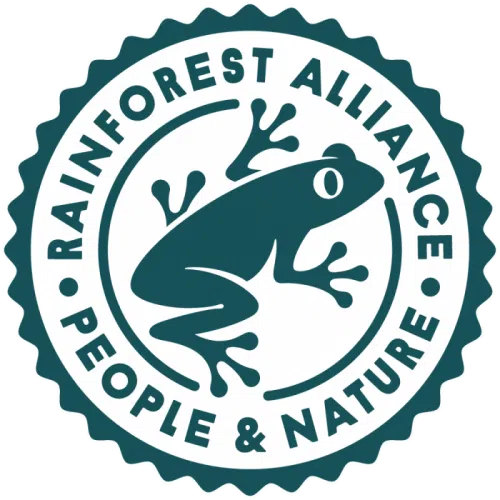
Rainforest Alliance Certified
www.rainforest-alliance.org
The Rainforest Alliance Certification is commonly seen on food product labels like coffee. Still, it can also be seen on backpacking meals/snacks, some gear and apparel, and a variety of paper products. Similarly to an FSC certification, a product may be all or partially certified, which is most often seen in products that use a mix of materials to make one product.
To earn the memorable tree frog logo, products must meet requirements across four areas: forests, climates, human rights, and livelihoods. Intersecting these areas helps to help improve land management, eliminate human rights violations within product production, preserve indigenous lands, and help farmers adapt to climate challenges.
The overall goal of the Rainforest Alliance is to protect and advance policies protecting rural workers and forests. They work with over 70 countries to develop certification standards. To establish the criteria and even integrate training programs, the Rainforest Alliance nonprofit works with local citizens within that community as farmers, scientists, and government officials, as well as incorporating Indigenous communities throughout the development. By involving so many sectors of local communities, they can form a strong alliance within the areas where it matters the most.
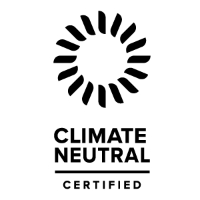
Climate Neutral Certified
www.climateneutral.org
The Climate Neutral Certified label is a “globally recognized standard for carbon accountability.” As a nonprofit, they work directly with various brands to have net-positive carbon emissions. The initial goal may be to reach zero carbon emissions, but as a long-standing goal, they work to have a positive impact.
Carbon emissions are measured by the total greenhouse gas emissions released into the atmosphere during that specific product or company’s production process. At the very least, the goal is to equalise the number of emissions they release with the amount they remove, but the idea is to sequester more carbon than they emit.
Climate Neutral does this by guiding companies through a three-step certification process. First, they assess the entire brand’s carbon footprint. Then, it is offset using verified carbon credits. Lastly, the company must develop a realistic and achievable carbon reduction plan. The last step is one of the most important and requires a company to strive to become more environmentally progressive instead of simply relying on carbon offsets.
For more info, read our list of Climate Neutral Certified outdoor brands.

Bluesign Approved
www.bluesign.com
Bluesign Approved is a certification used within textile manufacturing. Having this certification keeps the use of harmful chemicals and other harmful substances out of the production process. As an independent third party, they can trace textile production across the entire supply chain to ensure the brand is up to standards. That means that from the raw material extraction through to the finished product, they can trace materials, manufacturing, and other processes that have human and environmental impacts.
When a textile is Bluesign Approved, it meets the criteria for energy use, air/water emissions, wastewater treatment, chemical and dye use, and work environments. Many popular outdoor clothing and gear brands use Bluesign Approved fabrics, and the labels or product descriptions should disclose the specific material within the Bluesign Approved product. Some products only contain partial materials that are approved, so always check the product material specifications.

Global Organic Textile Standard
www.global-standard.org
The Global Organic Textile Standard (GOTS) is the leading certification for organic fibres. The standard uses criteria based on social and ecological values and expectations. They look at the entire textile supply chain and are backed by independent certification. While most products include yarns, fabrics, and clothes, a wide range of products falls within the textile category, including food contact textiles, mattresses, and tents.
With one organised global standard for all organic textile products, it makes it easier for manufacturers to be transparent about their processes and ensure everything is sourced and produced ethically.
Recognising that this certification is only for organic textiles is essential. Organic plants, like cotton, tend to utilise far fewer resources and produce far less pollution, making it safer for the ecosystems and workers. The GOTS can be trusted because of its use of third-party evaluations and strict criteria that must be met to earn the certification.
These certifications and standards alone are not the only things to consider when shopping sustainably, but they are an excellent place to start. Taking the time to find brands and products that you can trust and are genuinely transparent in their practices takes time. Once you find a few stand-out companies, though, it makes it easy to stick with them and support the work they are doing to make the outdoor industry a more sustainable place.


